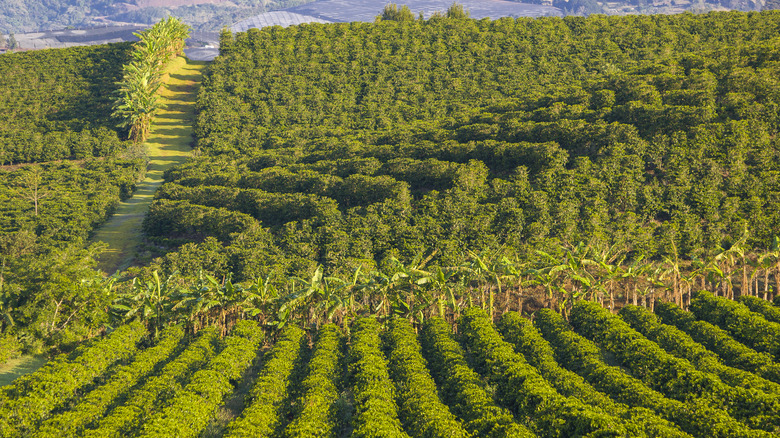What High-Grown Coffee Actually Means
Though the term sounds like something you'd expect to hear pass through the lips of a member of the landed gentry in the 18th century, high-grown coffee has nothing to do with aristocratic superiority. In fact, the definition is quite literal. For, high-grown coffee is, as its name suggests, grown at higher altitudes, which is said to have an effect on both the quality of the beans and the resulting flavor of the coffee.
If a coffee is labeled as high-grown, that means that it is sourced from beans that have been grown at 3,000 feet above sea level or higher. Exclusively Arabica beans, all high-grown coffee is sourced from highly elevated places such as the African nations of Ethiopia and Kenya, and the South American nation of Colombia. Another term, Strictly High-Grown (SHG) refers almost exclusively to coffee grown in Central America at altitudes above 4,000 feet. These countries include Costa Rica, El Salvador, Honduras, and Guatemala.
So what? you may say. Does a higher altitude really play that much of a role in the coffee's flavor? Are these high-grown coffees really superior in quality compared to those grown downslope of below 3,000 feet? The answer, in short, is: yes.
High-grown vs low-grown
The answer, in full, is that yes, the flavor of the coffee has everything to do with its elevation. High-grown coffee is universally regarded as being of more premium quality than those grown at lower elevations. This is thanks to the temperature found at higher elevations. Cooler climes are prime growing conditions for Arabica coffee beans, which all high-grown coffee is.
The process of growing coffee is a long one, and the lower temperatures at higher elevations keep it that way, allowing the coffee to mature at a much slower rate. As a result of this, the coffee beans have time to develop deeper, more complex flavors, as well as absorb more nutrients from the air and soil. Even if the country in question is a traditionally hot one, the temperatures are still colder the higher you go.
Low-elevation coffees grow in the heat and humidity found closer to sea level. These coffees are widely commercially available and affordable thanks to their quick growing time. The Robusta species thrives in the heat, but coffee aficionados and experts have noted that these beans tend to be more bitter and less complex than the specialty Arabica beans grown at higher altitudes. So, while your low-elevation beans are likely to be used in the instant coffee lining the aisles of your local grocery store, the high-grown stuff will almost exclusively be found in specialty cafés and premium coffee roasters.

